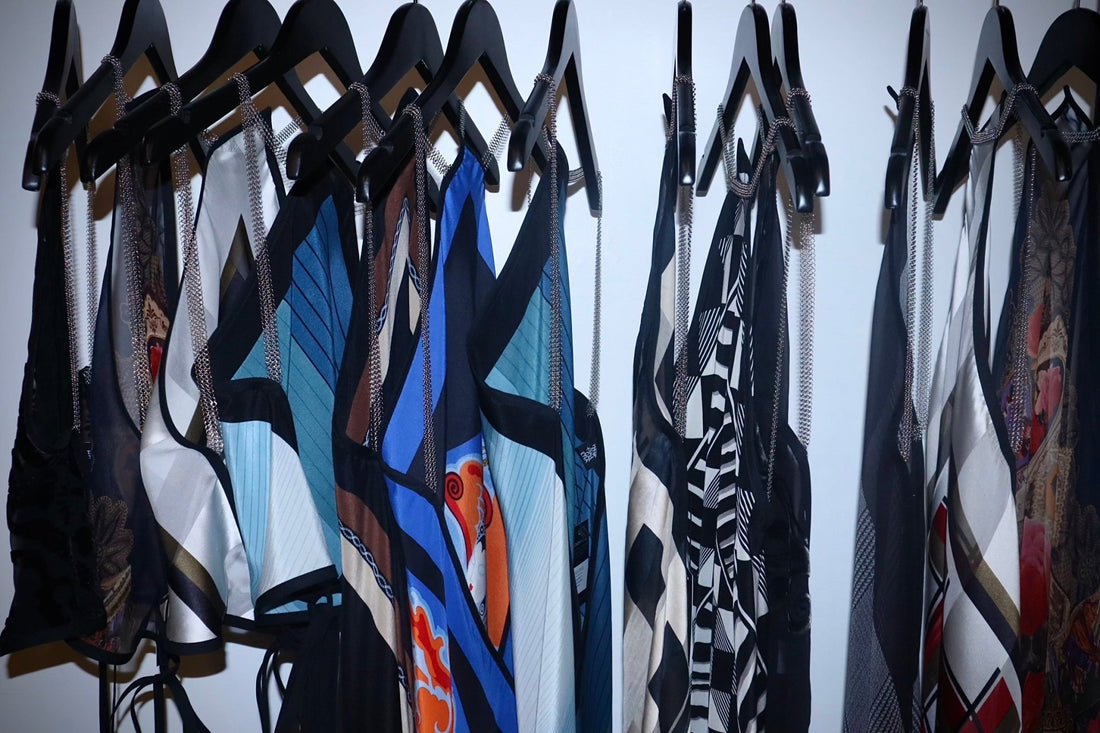
Fiber Fun: Navigating the Threads that Sow and Sew Sustainability
Share
While many look to fashion for a rapturous escape from life’s banality, it’s becoming increasingly difficult to overlook the tangible cost of this manufactured fantasy. As people’s environmental consciousness has grown, so has discontent around the fashion industry’s obscene carbon footprint: The fashion industry contributes more global carbon emissions than the shipping and aviation industries combined.
Copious raw material extraction, long supply chains, energy-intensive production processes, and constant trend-turnover are among the labyrinth of culprits. However, the tide is turning as consumers and brands alike are seeking sustainable alternatives. Unprecedented amounts of people wish to shop more sustainably, but good intention is only the first step. According to a UN study, 60% of sustainability claims by the big European fashion conglomerates are misleading or unsubstantiated, commonly known as "greenwashing." To live in a world where fantasy doesn't sacrifice reality and exploit ignorance, we should take the reins and educate ourselves on sustainable consumption.
In this exploration of sustainable fabrics, we give you everything you need to know to be a conscious consumer in today’s challenging fashion landscape. We delve into the origins, processing methods, and afterlife of materials to uncover which fabrics to look out for and which to avoid when buying your next piece of clothing.
In order to determine a material’s environmental impact, there are three questions to ask yourself:
1. Where does the raw material come from?
The journey from raw material to finished fabric plays a pivotal role in its ecological footprint. Sustainable processing methods include knitting, weaving, and the use of non-toxic dyes. On the flip side, bleaching, chemical processing, and the use of carcinogenic dyes pose big environmental concerns.
3. Where does the product end up?
While it’s easy to overlook, a fabric's final destination can play a big role in its environmental impact. Will the fabric end up in a landfill for hundreds of years? Is the fabric able to be recycled or repurposed? Is it decomposable?
With these questions in mind, let’s take a look at the most sustainable fabrics:
Organic Cotton:
- Grown without pesticides or synthetic fertilizers and processed without chemicals, organic cotton ensures a clean cultivation process while using significantly less water and less energy than regular cotton. One thing to look out for is a GOTS (Global Organic Textile Standard) certification in order to ensure quality standards are met.
Organic Linen:
- Made from the flax plant, which is high-yielding, requires little fertilizer, and uses little water to grow, linen is a great sustainable fabric. If you can find organic linen, it’s substantially more eco-friendly than regular linen and doesn’t alter the appearance.
Organic Hemp:
- Requiring little water to grow and acting as a carbon-negative raw material, hemp is a great eco-friendly choice. The hemp plant absorbs more CO2 from the atmosphere than an average plant and also replenishes nutrients into the soil. Clothes made from hemp have a long life, getting softer overtime as they’re washed and worn.
Wool and Cashmere:
- Wool comes from sheep or alpaca fur, and cashmere comes from goats. These materials are complex in terms of environmental impact because they're naturally occurring and biodegradable. However, in an industrial context, livestock raised solely for their fur can cause substantial land clearing, environmental damage from grazing, and methane gas emissions. When considering wool and cashmere, research the brand's specific sourcing practices and look for certification marks such as Responsible Wool Standard (RWS) or Good Cashmere Standard (GCS).
Lyocell:
- Derived from wood pulp, Lyocell is a semi-synthetic, biodegradable fabric produced from eco-friendly eucalyptus trees, which require minimal water and pesticides. Look specifically for TENCEL™ lyocell, which ensures that the eucalyptus forests are sustainably-managed with a closed-loop production process. A good rule of thumb is to always look for the TENCEL™ certification when purchasing other semi-synthetic fabrics, like modal or ECOVERO™
ECONYL®:
- Created from recycled materials like fishing nets and ocean plastic, ECONYL® is a more eco-friendly version of nylon fabric for garments such as swimsuits. Although, because it's made from plastic, it still releases microplastics when washed. We recommend using a Guppyfriend bag when washing it to mitigate environmental impact.
Deadstock Fabrics:
- Utilizing leftover fabrics from previous production cycles reduces waste and promotes a sustainable mindset. Deadstock fabrics can be manufacturing scraps from other brands, vintage clothing, or clothing that didn’t sell. These fabrics require no processing since they already exist in manufactured form, reducing the carbon footprint and diverting them from landfills.
Fabrics to Avoid:
Synthetic fabrics are essentially plastic, made from petroleum and other fossil fuels. They require lots of environmental resources to produce and process, release thousands of microplastics into waterways when washed and sit in landfills for hundreds of years. As much as possible, avoid buying:
- Polyester
- Nylon
- Acrylic
These fabrics are not synthetic, but they still cause heavy environmental damage. As much as possible, also avoid buying:
- Conventional Cotton
- Rayon
While incorporating more sustainable practices can feel daunting or overwhelming at times because of the plethora of available information, education is our best tool to make more conscious decisions when circumstances allow.
At Helena Magdalena, sustainability is fundamental to our business philosophy. At every stage of our production process, we make the most environmentally friendly choices we can, from manufacturing locally to using all deadstock fabrics. We create beautiful clothing without ugly consequences. We’re not just a fashion brand; we’re a movement, demonstrating that with a little effort, we can create a world where ethical business is the only acceptable standard.
